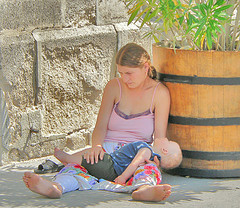North Carolina has made great strides over the past several years. The state’s approach to juvenile justice has been a showcase for the effectiveness of shifting the focus away from jails and into community- and rehabilitation-based practices.
Now all that is in jeopardy. James C. (Buddy) Howell, Ph.D., a criminologist and NC resident, recently penned a column for The Herald Sun in which he casts an eye on the situation:
Remarkable juvenile justice outcomes have been achieved in this state, including a 10-year-low juvenile offense rate and reduction of confinement by two-thirds, saving taxpayers more than $20 million. The catalyst for these changes came from the enactment of the North Carolina Juvenile Justice Reform Act in 1998. This act created a stand-alone Department of Juvenile Justice and Delinquency Prevention and placed priority back on community-based treatment while reserving confinement for serious, violent, and chronic juvenile offenders. The act also established Juvenile Crime Prevention Councils in each county to ensure the availability of local services that would reduce recidivism and confinement.
However, this incredibly successful juvenile justice system is being dismantled. Many readers may not know that — under the presumption of cost savings — the Department of Juvenile Justice and Delinquency Prevention was eliminated from its independent cabinet-level status and reconstituted as a division within the Department of Public Safety that also houses the Department of Corrections for adults. The lesson from other states that consolidated juvenile justice and adult corrections is that over time, treatment programs gave way to punishment and imprisonment priorities. The successful emphasis in juvenile justice has been on prevention and rehabilitation rather than on adult criminal justice practices. Prevention and rehabilitation goals are better accomplished when the juvenile justice agency is teamed with other youth services such as social services, mental health treatment, schools, mentors, job training and other needed treatment. Tying this agency to the adult criminal justice system threatens to erode the great success we have had over the last 14 years.
Once more the immediate fiscal situation is used as an excuse for short-term savings that become extravagant in the long run.
Economists at Vanderbilt University and the state of Washington agree that their findings demonstrate the effectiveness of interventions that prevent high-risk youth from engaging in repeat criminal offenses: effectiveness that can save the public nearly $5.7 million in costs per criminal! Imprisonment is expensive, but it is far from the only financial drain. Reverting to the old ways incurs: court costs, costs to victims, costs incurred by the offender, increased enforcement costs, and administrative costs. All must be viewed as part of the complete equation.
We are starting to make serious strides across the nation as states take note of the evidence that continues to mount. This is what makes it so sad to see a state that has been a model in this area falling victim to short-sighted, short-term thinking.
Related articles
- Juvenile Injustice (nytimes.com)
- Some lawmakers want minor criminals to stay in juvenile court (charlotte.news14.com)
- “Should Juvenile Criminals Be Sentenced Like Adults?” (sentencing.typepad.com)




 Winter is coming, and that is a bad time to be without shelter. The further north you go the harsher the climate, and thus the harder it is to survive unsheltered. Think about it when you run from your front door to your car, from island of heat to island of heat. Now think about that moment in the cold and stretch it out to days, weeks, months. For many, especially the very young and the very old, it can be the last season they will ever see.
Winter is coming, and that is a bad time to be without shelter. The further north you go the harsher the climate, and thus the harder it is to survive unsheltered. Think about it when you run from your front door to your car, from island of heat to island of heat. Now think about that moment in the cold and stretch it out to days, weeks, months. For many, especially the very young and the very old, it can be the last season they will ever see. The Seattle Times recently did a
The Seattle Times recently did a  It is no secret that the American prison system is rife with problems. It is the personal stories of women in our penal system that led our own Susan Madden Lankford to create
It is no secret that the American prison system is rife with problems. It is the personal stories of women in our penal system that led our own Susan Madden Lankford to create 







